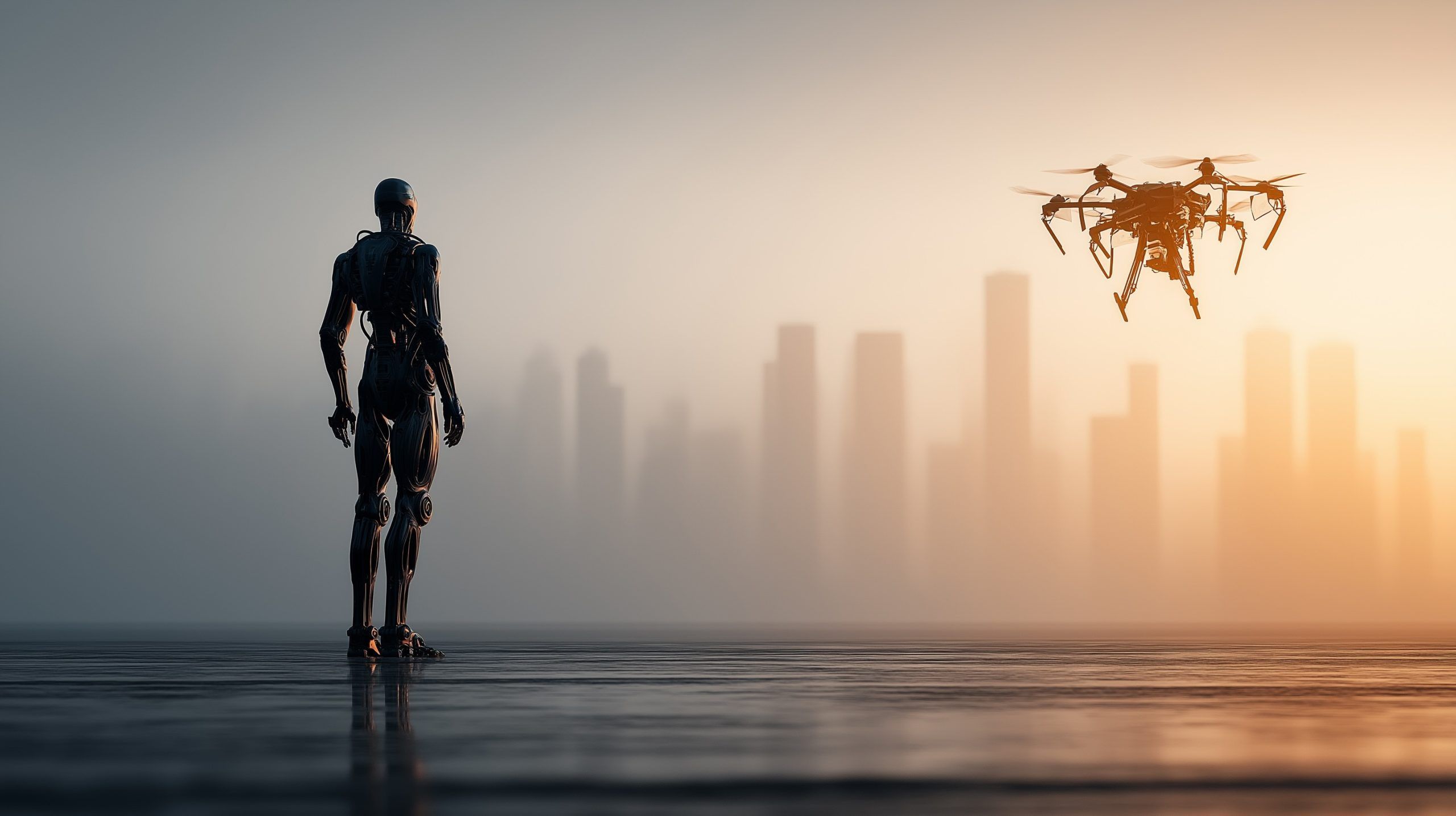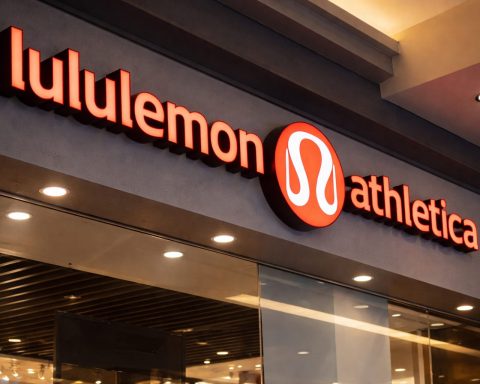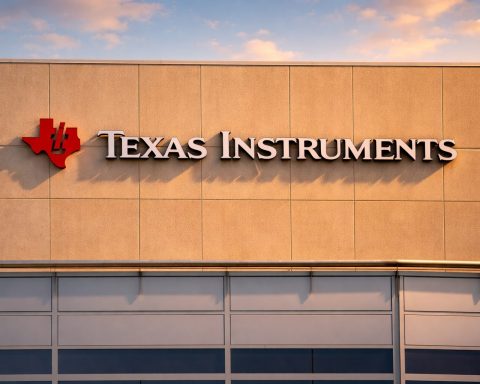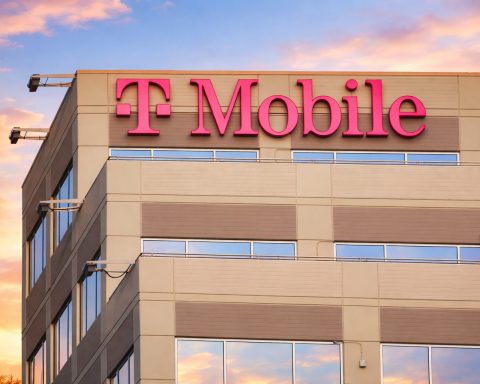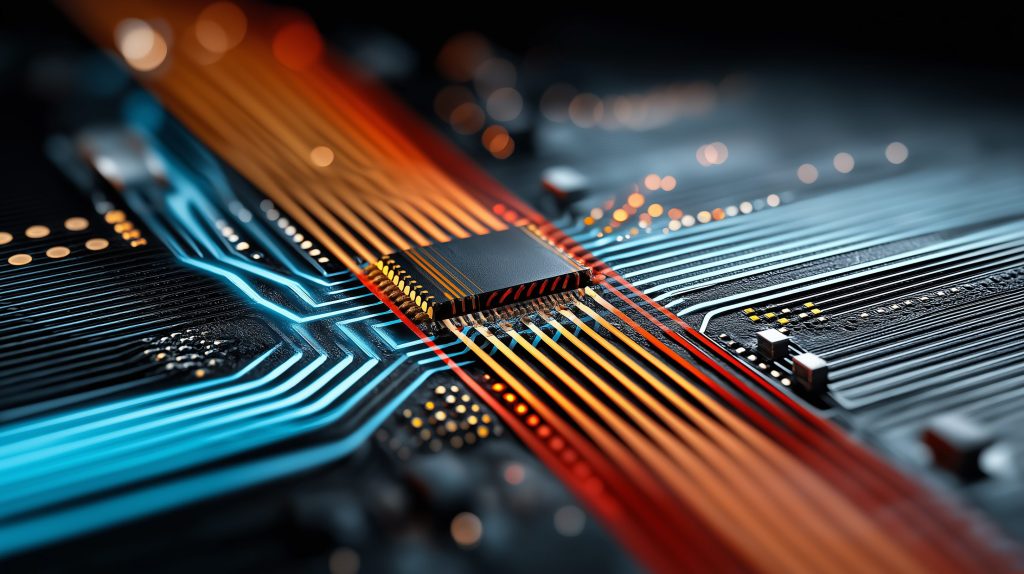- Amazon Robotics (formerly Kiva Systems) operates over 500,000 mobile robots in its fulfillment centers to power rapid order fulfillment.
- DJI remains the world’s largest drone manufacturer, commanding over 70% of the global market with flagship Phantom and Mavic series.
- SoftBank Robotics’ Pepper humanoid, launched in 2014, was the world’s first full-scale consumer-facing humanoid robot and became an iconic retail assistant.
- Intuitive Surgical dominates robotic surgery with the da Vinci system, boasting more than 7,500 installed robots worldwide and over 10 million surgeries performed.
- Zipline operates autonomous fixed-wing medical delivery drones with more than 500,000 deliveries and flight ranges up to 80 km.
- Wing, Alphabet’s drone delivery arm, achieved FAA approval for U.S. operations and has completed tens of thousands of deliveries in test markets.
- Nuro’s R2 and R3 autonomous delivery vehicles received a special U.S. permit for driverless delivery in 2020, marking a regulatory milestone for autonomous home delivery.
- Starship Technologies has completed over 4 million sidewalk deliveries with its small autonomous delivery robots on campuses and city streets.
- Lely, a leader in robotic milking, has installed over 35,000 Astronaut milking robots worldwide since its founding in 1948.
- Kratos Defense & Security’s unmanned systems include the MQM-178 Firejet and UTAP-22 Mako, with development of the XQ-58A Valkyrie for the U.S. Air Force representing a move toward affordable, high-speed drones.
The robotics industry is booming worldwide, impacting everything from manufacturing and healthcare to agriculture and defense. Below, we present 100 of the most important robotics and drone companies across industrial, consumer, defense, medical, agriculture, and delivery sectors. These include both established leaders and innovative startups from around the globe. Each listing includes the company’s focus, key products or solutions, headquarters country, and a link to its official website, with sources to validate their significance.
Industrial & Manufacturing Robotics
Leading providers of robots for factory automation, manufacturing, and related industries.
- ABB (Switzerland) – A global leader in industrial automation and robotics, offering a wide range of robotic arms (including collaborative robots), palletizers, and AI-integrated factory solutions [1]. ABB’s robots are used in automotive, electronics, and many other industries, making it a cornerstone of smart manufacturing.
- Fanuc (Japan) – One of the world’s largest industrial robot manufacturers, known for high-precision, high-speed robotic arms widely used in automotive and electronics production [2]. Fanuc’s yellow robots are ubiquitous in factories worldwide, reflecting its dominant market share in industrial robotics.
- Yaskawa Electric (Motoman) (Japan) – A major robotics maker famous for its Motoman line of robots. Yaskawa’s systems excel in welding, assembly, and materials handling across multiple sectors [3]. It’s a pioneer in industrial robotics with over 100 years in motion control technology.
- KUKA (Germany) – A leading European robotics company (now part of China’s Midea Group) at the forefront of advanced robotics for automotive manufacturing, logistics, and “smart factory” systems [4]. KUKA’s signature orange robots are known for precision and have become a symbol of Industry 4.0 automation.
- Mitsubishi Electric (Japan) – Producer of compact, high-speed SCARA and articulated robots that integrate with Mitsubishi’s factory automation platforms [5]. Mitsubishi’s robots are popular in electronics assembly and food packaging, emphasizing reliability and easy integration.
- Kawasaki Robotics (Japan) – An early innovator in industrial robots, Kawasaki offers a broad portfolio from heavy-payload robots for welding and painting to medical and collaborative robots [6]. Drawing on 50+ years of experience, it continues to incorporate AI and safety features into next-gen robotic systems.
- Denso Robotics (Japan) – Originally an automotive parts giant, Denso has grown into a top manufacturer of small industrial robots, especially for electronics and automotive assembly [7]. Its high-speed, compact robots are widely used in precision manufacturing and have over 120,000 units installed globally [8].
- Stäubli (Switzerland) – Specializes in high-precision six-axis and SCARA robots for cleanrooms, pharmaceuticals, and fast pick-and-place automation [9]. Stäubli’s robots are known for reliability in demanding environments, such as sterile pharma production or high-speed packaging [10].
- Universal Robots (Denmark) – A pioneer of collaborative robots (cobots) that are safe to work alongside people. Universal Robots has deployed over 75,000 lightweight cobots globally, helping small and medium businesses automate tasks [11]. Its user-friendly UR cobots essentially “democratized” automation for new markets [12].
- Omron Robotics (Japan) – Part of Omron’s automation group, it provides industrial robots integrated with vision systems and controls for assembly, pick-and-place, inspection and more [13]. Omron’s acquisition of Adept Technology expanded its robotics lineup, and its mobile robots (like LD series AMRs) serve in factories and hospitals for material transport.
- Doosan Robotics (South Korea) – A rising star in collaborative robots. Doosan’s cobots are known for intuitive programming and built-in safety, rapidly gaining market share by making automation accessible and safe for various industries [14]. Founded in 2015 as part of Doosan Group, it has quickly become one of the world’s largest cobot makers.
- Hyundai Robotics (South Korea) – Spun off from Hyundai Heavy Industries, this company supplies industrial robots for welding, painting, and material handling, especially to automotive plants [15]. Backed by the Hyundai conglomerate (which also now owns Boston Dynamics), Hyundai Robotics is expanding in smart factory and EV manufacturing automation.
- Comau (Italy) – A Turin-based automation firm (owned by Stellantis) with deep roots in automotive assembly line robotics. Comau provides articulated robots, collaborative robots, and even exoskeletons for factory workers [16]. It’s known for heavy-duty robots in car body assembly and has begun integrating AI and IoT for smarter manufacturing.
- Epson Robots (Japan) – Part of Seiko Epson, this company is renowned for its SCARA robots used in precision assembly and electronics manufacturing [17]. Epson’s robots are prized for speed and accuracy in tasks like small parts handling or lab automation, and the company is expanding into medical technology assembly solutions [18].
- Nachi-Fujikoshi (Japan) – A leading supplier of industrial robots for welding, painting, and material handling in heavy industries [19]. Nachi integrates its robots with machine tools and is known for robust designs used in automotive factories and steel plants.
- Techman Robot (Taiwan) – A Pegatron (Asus) subsidiary combining cobot arms with built-in vision systems for semi-automated factories [20]. Techman’s collaborative robots (branded TM) excel in tasks like packaging and light assembly, and the company formed a strategic alliance with Omron to reach global markets [21].
- Siasun Robot & Automation (China) – China’s first publicly-listed robotics firm, producing everything from articulated arms and cleanroom robots to automated guided vehicles [22] [23]. With strong government backing, Siasun has become a key player driving China’s rapid growth in industrial robot installations.
- Estun Automation (China) – A fast-growing Chinese robotics and motion-control company. Estun has expanded via R&D and acquisitions (including abroad) and is increasingly targeting global markets [24]. Its product range covers robotic arms as well as servo drives and controllers for factory automation.
- Agility Robotics (USA) – A cutting-edge startup known for “Digit,” a humanoid bipedal robot designed to navigate human spaces. Agility is pushing boundaries in warehouse and last-mile automation with legged robots that can handle tasks like lifting and carrying in environments designed for people [25]. Its work on humanoid mobility aims to make robots more versatile in industrial and logistics settings.
- Boston Dynamics (USA) – Famous for its advanced legged robots like Atlas (humanoid) and Spot (quadruped). Initially a research company, it’s now transitioning to commercial applications with products like Stretch, a mobile warehouse palletizing robot [26]. Backed by Hyundai, Boston Dynamics is turning its awe-inspiring prototypes into practical robots for logistics, inspection, and public safety [27].
Consumer & Home Robotics
Robotics companies focusing on consumer devices, home automation, personal robots, and consumer drones.
- iRobot (USA) – Creator of the Roomba® robot vacuum, iRobot pioneered home robotics. Its floor-cleaning robots (Roomba, Braava mop) have made it a leading consumer robotics brand in home automation [28]. Despite new competition, iRobot’s Roomba remains the most recognizable home robot globally. (Note: iRobot is being acquired by Amazon, reflecting the value of home robotics.)
- Roborock (China) – A fast-growing maker of smart robot vacuum cleaners and mops. Roborock is known for high-end features (LIDAR navigation, automatic mopping stations) and in 2024 it overtook iRobot as the world’s largest robot vacuum producer by shipment volume [29]. This Shenzhen-based company’s devices are popular for their cleaning performance and advanced home mapping capabilities.
- Ecovacs Robotics (China) – A pioneer in home service robots, best known for its DEEBOT robot vacuums and WINBOT window-cleaning robots. Ecovacs is the leading robotic vacuum brand in China and in early 2023 ranked #1 globally in market share for core robotic vacuum markets [30] [31]. With features like auto-empty stations and voice assistants, Ecovacs continues to innovate for smart homes.
- DJI (China) – The world’s largest drone manufacturer, commanding over 70% of the global drone market [32]. While known for its Phantom and Mavic camera drones popular with consumers and filmmakers, DJI also offers the RoboMaster robot kit and agricultural drones. DJI’s high-quality drones with advanced 4K cameras and obstacle avoidance have revolutionized aerial photography and recreational flying [33].
- Parrot (France) – A pioneering European drone company offering consumer and professional UAVs. Parrot’s ANAFI series drones are known for portability and AI features (like the ANAFI Ai with 4G connectivity) [34] [35]. Parrot also produces specialty drones (e.g. thermal imaging) and was an early leader in consumer drones with its AR.Drone and Bebop models.
- Autel Robotics (China/USA) – A maker of high-quality camera drones for consumers and professionals, including the EVO series. Autel’s drones feature 6K/8K cameras, obstacle avoidance, and long flight times [36] [37]. With headquarters in Shenzhen and Seattle, Autel is DJI’s most prominent competitor in the prosumer drone segment, known for its “no geofence” policy appealing to many pilots.
- Skydio (USA) – An American drone startup famed for its fully autonomous flying cameras. Skydio’s drones (like the Skydio 2+) use AI and computer vision to skillfully track subjects and avoid obstacles, setting a new standard for autonomous flight [38] [39]. Skydio also developed enterprise/defense drones (X2 series) and the Skydio Dock for remote deployments, and by manufacturing in the USA it has been adopted for public safety and defense uses as well.
- SoftBank Robotics (Japan) – Developer of the Pepper humanoid robot and NAO robot. Pepper is a social humanoid that was the world’s first full-scale humanoid offered to consumers (launched 2014) [40]. While it found more use greeting in shops and airports than in homes, Pepper became an icon of personal robotics. SoftBank Robotics (originally Aldebaran of France) also makes the Whiz cleaning robot, and its focus is on robots that interact with people in retail, hospitality, and home settings.
- Ubtech Robotics (China) – A leading consumer and educational robotics startup known for humanoid robots and STEM kits. UBTECH’s Alpha mini humanoid and JIMU robot kits have gained popularity as educational toys. The company also unveiled Walker, a full-size bipedal humanoid, and develops service robots for retail and elder care. UBTECH is one of China’s most funded robotics companies, aiming to bring humanoid robots into homes and businesses.
- Sony AI Robotics (Japan) – Sony is not traditionally a pure robotics company, but it’s behind the iconic Aibo robot dog. Aibo (latest generation revived in 2018) is a consumer robot pet with advanced AI that can recognize faces and learn behaviors, representing Sony’s push into home robotics and entertainment [41]. Sony’s robotics efforts also include AI-driven drones (Airpeak) for photography and substantial R&D in AI and sensor tech for robots.
- Pudu Robotics (China) – A fast-growing maker of service robots for restaurants, hospitality and cleaning. Pudu’s tray robots (like “BellaBot” and “KettyBot”) autonomously deliver food to restaurant patrons, a solution widely adopted in Asia and beyond to address labor shortages. It also offers cleaning and disinfection robots. Founded in 2016 in Shenzhen, Pudu has deployed thousands of robots globally, becoming a leader in commercial service robotics.
- Bear Robotics (USA) – Another prominent player in the food-service robot niche. Based in Silicon Valley, Bear Robotics produces self-driving waiter robots (“Servi” robots) that can carry dishes to tables. Its robots have been used in restaurant chains and senior living communities in the U.S. and Asia. Bear’s solutions help hospitality businesses improve efficiency and reduce staff workload, illustrating how robotics is entering everyday consumer-facing environments.
Defense & Security Robotics (Drones & Unmanned Systems)
Companies building robots and drones for military, defense, and public safety applications.
- General Atomics Aeronautical Systems (USA) – The maker of the famous “Predator” and “Reaper” military drones, which have become synonymous with modern unmanned aerial vehicles (UAVs) in defense. General Atomics’ Predator series defined the armed drone category, providing long-endurance remotely-piloted aircraft used by the U.S. and allies for intelligence and strike missions [42]. It remains the top drone defense contractor globally [43], continually evolving its UAVs and sensor systems.
- Northrop Grumman Aeronautics (USA) – A leading defense firm known for large UAVs like the Global Hawk high-altitude surveillance drone. Northrop’s aeronautics division (ranked #2 in drone defense companies [44]) produces cutting-edge uncrewed systems including stealth drones and autonomous aircraft for the U.S. Air Force and Navy.
- Baykar Technologies (Turkey) – Developer of the Bayraktar TB2 drone, which gained international attention for its effective use in recent conflicts. Baykar is Turkey’s foremost drone manufacturer, and its Bayraktar TB2 armed drone has been exported to multiple countries, showcasing the rise of affordable, combat-proven drones [45]. Baykar’s newer models (Akıncı, Kızılelma) aim to push into higher-end and jet-powered UAVs, putting Turkey on the map in drone tech.
- Elbit Systems (Israel) – An Israeli defense giant producing a wide range of unmanned systems. Elbit’s portfolio includes the Hermes series of military drones used for reconnaissance, as well as ground robots and naval unmanned systems. It consistently ranks among the top drone technology companies [46]. Elbit’s UAVs are used by many militaries worldwide, continuing Israel’s legacy as a leader in drone innovation.
- Anduril Industries (USA) – A defense tech startup (founded 2017) specializing in autonomous systems and AI for military use. Anduril develops a family of drones (like the Ghost drone) and surveillance systems powered by its Lattice AI platform [47]. It has quickly grown (multi-billion valuation) by offering counter-drone systems and unmanned vehicles to the U.S. and allies, exemplifying a new wave of Silicon Valley defense companies.
- AeroVironment (USA) – A long-standing UAV manufacturer known for small tactical drones like the Raven, Wasp, and Puma, as well as the Switchblade loitering munition. AeroVironment’s small drones are widely used by the U.S. military and others for frontline reconnaissance [48] [49]. It’s also a pioneer in hand-launched drones and was recently ranked among the top defense drone firms [50].
- Shield AI (USA) – A defense AI and robotics company focusing on autonomous UAV software. Shield AI’s Hivemind AI pilot enables drones and aircraft to fly and dogfight without GPS or remote control [51]. Its Nova indoor drone has seen use by U.S. special forces for clearing buildings. Backed by significant funding, Shield AI exemplifies the push to give military drones advanced autonomy and swarming capabilities.
- Ghost Robotics (USA) – A startup making unmanned ground vehicles, notably quadrupedal robots (similar to robotic “dogs”). Ghost’s Vision 60 legged robot is built for defense and public safety – it can navigate rough terrain, carry sensors, and even mount weapons. These robots have been tested by the U.S. Air Force for security patrols. Ghost Robotics gained notoriety for a weaponized demo unit in 2021, raising discussions on the role of armed robots in warfare.
- Teledyne FLIR (Endeavor Robotics) (USA) – FLIR (now part of Teledyne) acquired Endeavor Robotics, which itself spun out of iRobot’s defense division. This lineage created the most widely used bomb-disposal robots like PackBot and Talon. Teledyne FLIR’s unmanned ground robots are used for explosive ordnance disposal and hazardous incident response around the world, making it a leader in ground robotics for defense [52].
- QinetiQ (UK) – A British defense technology company known for the TALON family of bomb-disposal robots and other UGVs. QinetiQ’s robots have been employed by NATO forces for decades to handle explosive threats. It also develops drones and cutting-edge military tech, placing it among top global unmanned systems firms [53].
- Milrem Robotics (Estonia) – A European (Estonian) company specializing in unmanned ground vehicles. Its flagship THeMIS UGV is essentially a tracked robotic carrier that can be fitted for bomb disposal, reconnaissance, or as a remote weapons platform. Milrem also leads a European project on a Modular Unmanned Ground System. As one of Europe’s prominent robotics firms, Milrem is bringing autonomy to front-line ground operations.
- Israeli Aerospace Industries (IAI) (Israel) – A state-owned aerospace company and drone pioneer. IAI developed the early Heron and Searcher UAVs and more recently the Harop loitering munition drone. Its drones have been exported widely and influenced global drone design. (IAI is not on some rankings due to state ownership, but its importance in drone history is significant.)
- Leonardo S.p.A. (Italy) – An Italian defense company with a portfolio including drones (like the Falco UAV) and robotic turrets. Leonardo (formerly Finmeccanica) was ranked in the top 10 of defense drone firms [54], and it co-develops the nEUROn UCAV demonstrator. Leonardo also produces smaller tactical drones and invests in autonomous systems, representing European contribution in this sector.
- L3Harris Technologies (USA) – A major U.S. defense contractor active in unmanned systems. L3Harris provides various drones (air and sea) and integrates autonomous capabilities into military systems. It acquired Israeli drone maker Aeronautics Ltd in 2022, adding products like the Orbiter loitering UAV to its lineup. As a top-12 ranked drone defense company [55], L3Harris is shaping the future of networked battlefield drones and sensors.
- Kratos Defense & Security (USA) – Known for its “target drones” and development of high-performance unmanned combat aerial vehicles. Kratos builds the MQM-178 Firejet and UTAP-22 Mako drones, and is developing the XQ-58A Valkyrie, a jet-powered combat drone (loyal wingman) for the U.S. Air Force. Kratos leverages its expertise in affordable, high-speed drones to supply both training targets and future combat drones [56].
- ideaForge (India) – A leading Indian drone manufacturer, notable for supplying surveillance and mapping UAVs to India’s military and police. ideaForge’s drones (like Switch UAV) have high endurance and were used for surveillance along borders. In 2023, ideaForge became one of the first Indian drone startups to go public, underscoring India’s emergence in the UAV industry.
- Edge Autonomy (USA) – Formed from a merger of UAV Factory (Latvia/US) and Jennings Aeronautics, Edge Autonomy produces small unmanned aircraft and ISR payloads. Its Penguin series drones are popular for military and civilian long-endurance missions. Edge also provides loitering munitions and was listed among top 25 drone defense firms [57]. This highlights the growing ecosystem of specialized mid-size drone suppliers.
- BlueHalo (USA) – A mid-sized defense technology company that has risen to prominence for counter-drone systems and small tactical drones. BlueHalo offers products like the Ghost drone and Titan counter-UAS system. It focuses on cutting-edge directed energy and autonomous platforms, and was ranked #7 in drone defense firms [58]. BlueHalo’s work exemplifies the intersection of robotics, lasers, and AI for defense.
- ASA (Aviation Industry Corp. of China) / CASC (China) – While state-owned and not on some rankings, China’s major aerospace conglomerates (AVIC, CASC) deserve mention for their prolific development of military drones. AVIC’s Wing Loong series and CASC’s CH (Caihong) series armed drones are exported to many countries, making China a key player in the global drone arms market. These companies leverage China’s vast resources to rapidly advance drone capabilities (though detailed data is often limited).
Medical & Healthcare Robotics
Companies building robots for surgery, healthcare, rehabilitation, and medical services.
- Intuitive Surgical (USA) – The undisputed leader in surgical robotics, known for the da Vinci Surgical System which revolutionized minimally invasive surgery [59]. With over 7,500 da Vinci robots installed worldwide, Intuitive dominates the robotic surgery market [60]. Its systems enable surgeons to perform complex procedures with enhanced precision and have been used in more than 10 million surgeries globally.
- Stryker (USA) – A top medical device company that has made a major mark in surgical robotics with its Mako Robotic-Arm Assisted Surgery system. Mako is widely used for knee and hip replacements, combining 3D pre-operative planning with a robotic arm for precise bone cuts [61]. Stryker’s success with Mako in orthopedics has propelled it to be a key competitor in medical robotics, quickly gaining ground behind Intuitive [62].
- Medtronic (USA/Ireland) – The world’s largest medtech company, Medtronic has entered robotic surgery with its Hugo robotic-assisted surgery (RAS) system. Hugo is a modular multi-arm system for soft-tissue surgeries, designed to be more flexible and affordable for hospitals [63]. Medtronic also offers the Mazor X spine surgery robot (from Mazor Robotics acquisition) and integrates robotics in cath lab and pill capsule endoscopy.
- Johnson & Johnson (USA) – A healthcare giant that is investing heavily in surgical robotics. Through its Ottava project and the acquisition of Auris Health, J&J is developing the Ottava multi-port surgical robot and already markets the Monarch robotic bronchoscopy system for lung diagnostics [64]. With its global reach and deep pockets, J&J is poised to become a major player in next-gen surgical robotics, challenging the incumbents [65].
- Smith & Nephew (UK) – An orthopedic and wound-care company that jumped into robotics with its Navio surgical system for knee replacements. Navio is a handheld robotic-assisted system for partial and total knee arthroplasty [66]. Smith & Nephew has also acquired the CORI surgical robot (from Think Surgical) to expand its digital surgery portfolio. These systems reflect how even mid-size medtech firms are embracing robotics to improve surgical outcomes.
- Zimmer Biomet (USA) – A major orthopedic device maker offering the ROSA Robotics suite for joint surgeries. ROSA Knee and ROSA Hip are robotic assistants that help surgeons plan and execute knee and hip replacements with greater accuracy [67] [68]. Zimmer Biomet’s focus is on integrating robotics and data (through its ZBEdge platform) to personalize orthopedic procedures and improve patient outcomes.
- Globus Medical (USA) – A specialist in spine and trauma solutions that developed the ExcelsiusGPS robotic navigation platform for spinal surgery. This robot mounts to the OR table and guides implant positioning in spine procedures, improving accuracy [69] [70]. Globus’s system is a leader in the nascent field of spine robotics, helping surgeons place screws and hardware with robotic guidance.
- CMR Surgical (UK) – Creator of the Versius Surgical Robotic System, a next-gen competitor to da Vinci. Versius features modular robotic arms and an open surgeon console, aiming to offer more flexible and cost-effective minimal access surgery [71] [72]. CMR (Cambridge Medical Robotics) has deployed Versius in Europe, Asia, and beyond, making it one of the most successful new surgical robot startups out of Europe.
- Asensus Surgical (USA) – Formerly TransEnterix, Asensus offers the Senhance Surgical System, known as a “digital laparoscopy” platform. Senhance uses reusable instruments and features like haptic feedback and eye-tracking camera control [73]. It aims to bring robotic precision at a lower cost, and has seen adoption in Europe and Asia for general surgery and gynecology.
- Accuray (USA) – A leader in medical robotics for radiation therapy. Accuray makes the CyberKnife robotic radiosurgery system, which delivers high-dose radiation to tumors with sub-millimeter precision [74]. It also makes the TomoTherapy and Radixact systems for image-guided radiation. CyberKnife was one of the first non-surgical medical robots and remains vital for treating cancers in a “knifeless” manner.
- Stereotaxis (USA) – A niche medical robotics firm specializing in robotic magnetic navigation for cardiac procedures. Stereotaxis’ system allows magnetic catheters to be steered inside the heart for ablations, reducing the physical strain on physicians and improving precision [75] [76]. Its Niobe system has been used in thousands of complex cardiac cases, showing robotics’ impact beyond surgery into interventional cardiology.
- Noah Medical (USA) – An emerging startup that developed the Galaxy System, a next-generation robotic platform for bronchoscopic lung biopsy [77]. The Galaxy robot integrates advanced imaging, navigation, and robotic control to improve diagnosis of lung nodules. Founded in Silicon Valley, Noah Medical is part of a wave of new medical robot ventures (like Auris/J&J’s Monarch) targeting lung and other natural orifice surgeries with robotics.
- Cyberdyne (Japan) – Famous for its wearable exoskeleton suit HAL (Hybrid Assistive Limb), which helps patients with spinal cord injury or stroke rehabilitate and regain mobility. Cyberdyne’s HAL exoskeleton is approved for use in Japan and Europe, enabling motion by detecting the user’s bioelectric signals. This venture from Tsukuba University exemplifies advanced robotics in rehabilitation and elderly care.
- Ekso Bionics (USA) – A pioneer in exoskeleton technology for rehabilitation and industrial use. Ekso’s wearable robotic exoskeletons (EksoNR for neurorehab and EksoUE for upper extremity) allow patients with paralysis or weakness to stand and walk during therapy. Ekso devices have helped over 50,000 patients in rehab walking sessions, showcasing how robotics can augment human mobility in healthcare.
- ReWalk Robotics (Israel/USA) – Maker of the ReWalk exoskeleton, a powered wearable suit that enables paraplegics to walk upright. ReWalk was the first exoskeleton to receive FDA clearance for personal use in the US. The company also developed the ReStore exo-suit for stroke rehab. ReWalk’s systems have been life-changing for users, allowing many wheelchair-bound individuals to walk again with robotic assistance.
- Hocoma (Switzerland) – A world leader in robotic rehabilitation therapy equipment. Hocoma’s devices include the Lokomat gait rehabilitation robot (a robotic treadmill that helps retrain walking) and the Armeo series for arm rehabilitation. Hundreds of clinics use Hocoma’s robots and therapy software for patients with neurological injuries, making it a cornerstone of high-tech rehab and evidence-based therapy augmentation.
- Titan Medical (Canada) – A Canadian company developing the Enos robotic single-port surgical system. Aimed at performing surgeries through a single incision, Enos is in R&D to compete in the surgical robotics space. While not commercialized yet, Titan’s focus on single-port robotics addresses a trend towards less invasive surgical approaches. (Honorable mention: Another single-port system, Da Vinci SP by Intuitive, is already in limited use, reflecting interest in this area.)
- Distalmotion (Switzerland) – Creator of the Dexter surgical robot, which is a novel hybrid system combining robotic arms with laparoscopic flexibility [78] [79]. Dexter is designed to be an affordable, ergonomic assistant for laparoscopic surgeons, allowing them to switch between manual and robotic control. This Swiss startup’s approach shows how new players are innovating to make surgical robots more accessible to hospitals worldwide.
Agriculture & Farming Robotics
Companies applying robotics and drones to farming, from autonomous tractors to crop-monitoring drones and milking robots.
- John Deere (USA) – The iconic farm equipment manufacturer that is aggressively adopting automation and robotics in agriculture. Deere has acquired startups like Blue River Technology (AI-driven See & Spray weed-killing robots) and Bear Flag Robotics (autonomous tractor technology) to accelerate farm robotics [80] [81]. It even unveiled a fully autonomous tractor in 2022. Deere’s embrace of robotics signals a future of “smart farming” where tractors drive themselves and crops are tended by AI-guided machines.
- Blue River Technology (USA) – A startup-turned-subsidiary of John Deere specializing in computer vision and robotics for precision agriculture. Blue River’s See & Spray system uses cameras and AI to identify weeds and selectively spray herbicide, drastically reducing chemical use [82]. This technology, now being integrated into Deere’s sprayers, exemplifies how robotics and AI can make farming more sustainable by treating individual plants.
- Naïo Technologies (France) – A pioneer in autonomous field robots for agriculture. Founded in 2011, Naïo develops electric weeding robots such as Oz (for small farms and vegetable gardens), Dino (for large-scale row crops), and Ted (for vineyards) [83] [84]. These robots navigate using GPS and cameras to mechanically weed fields without chemicals. Naïo has over 150 robots in use across Europe and beyond, addressing farm labor shortages and the need for organic weed control [85].
- Lely (Netherlands) – The world leader in robotic milking and dairy automation. Lely’s Astronaut robotic milking system allows cows to be milked on their own schedule, improving animal welfare and farm productivity [86] [87]. Founded in 1948, Lely sold its first milking robot in the 1990s and today has over 35,000 milking robots installed worldwide. It also offers robots for feeding, cleaning barns, and cow care. Lely’s success has transformed dairy farming by reducing labor needs and boosting milk yields through happier cows [88].
- XAG (China) – One of the world’s largest agricultural drone and robot companies. Guangzhou-based XAG produces powerful agricultural spraying drones (with models like P100 and P150) and autonomous ground robots for crop spraying and spreading. By 2022, XAG had sold over 120,000 agri-drones globally [89], second only to DJI in this sector. Its drones can precisely spray pesticides or sow seeds, dramatically improving efficiency in Chinese farming. XAG’s innovation and scale have made China a leader in ag tech deployment [90].
- DeLaval (Sweden) – A Swedish company (part of Tetra Laval) that is a major competitor in robotic milking systems and dairy farm automation. DeLaval’s VMSTM milking robots and herd management software are used on thousands of farms, automating not just milking but also feeding and cow monitoring. DeLaval was among the first to commercialize automatic milking in the 1990s and continues to innovate for larger herd operations. Together with Lely, it has helped bring about the robotic dairy revolution.
- Iron Ox (USA) – A Silicon Valley startup that operates robotic greenhouses. Iron Ox uses autonomous robots and AI to manage indoor farming – their mobile robots move hydroponic planters and an AI system monitors plant health. The goal is to grow produce more sustainably and locally using robotics to optimize plant care and yield. Iron Ox’s approach demonstrates how robotics can enable vertical farming and year-round local produce with minimal human labor.
- FarmWise Labs (USA) – Creator of the FarmWise Titan robot (earlier called “Autonomous Weeder”). It’s a tractor-sized field robot that uses vision to identify crops vs. weeds and mechanically remove weeds in vegetable fields. FarmWise has deployed its machines with large vegetable growers in California, reducing their need for herbicides and hand weeding. The company is part of a wave of U.S. agtech startups bringing AI and robotics to vegetable farming in response to labor shortages and chemical restrictions.
- AgroIntelli (Denmark) – Maker of the Robotti platform, a compact autonomous tractor unit that can perform tasks like seeding, weeding, and mowing. Robotti is essentially a small self-driving tractor that farmers in Europe use to automate routine fieldwork. Denmark’s AgroIntelli represents how traditional farm machinery is evolving into autonomous robots that can work day and night with minimal supervision.
- SwarmFarm Robotics (Australia) – An Australian startup focused on “swarm” field robots. Their platform consists of small, lightweight autonomous machines that can be deployed in fleets to perform tasks like spraying or mowing. By using many small robots instead of one big machine, SwarmFarm aims to reduce soil compaction and increase resilience (if one robot fails, others continue). It’s a novel approach gaining traction in Australia’s broadacre farms and golf course maintenance, illustrating innovation in farm robotics Down Under.
Logistics & Warehouse Robotics
Companies providing robots for warehouses, fulfillment centers, and supply chain automation (excluding last-mile delivery robots, which are in the next section).
- Amazon Robotics (USA) – Formerly Kiva Systems, Amazon Robotics is the backbone of Amazon’s automated fulfillment centers. Its orange Kiva/drive units roam warehouses to fetch shelves of products, enabling Amazon’s famously rapid order fulfillment [91]. Amazon has over 500,000 mobile robots working alongside human pickers. It has also developed robotic sorters, palletizers, and the experimental Scout delivery robot. Amazon’s massive investment in robotics has set new standards for warehouse efficiency.
- Symbotic (USA) – A warehouse automation company whose advanced autonomous mobile robots and sorting system have been deployed in Walmart distribution centers. Symbotic’s system uses fleets of robots that store, retrieve, and sort cases of groceries at high speed, directly improving supply chain throughput [92]. Its transformative impact on Walmart’s logistics earned Symbotic recognition as one of the leading innovators in warehouse robotics.
- Geek+ (China) – A global leader in Autonomous Mobile Robots (AMRs) for warehousing. Beijing-based Geek+ has deployed over 20,000 robots worldwide for order picking, parcel sortation, and inventory movement. Its goods-to-person picking robots and sorting robots are used by major e-commerce and retail companies in Asia, Europe, and the US. Geek+ was among the first Chinese startups to achieve scale in warehouse robotics and continues to innovate in robot intelligence and fleet management.
- GreyOrange (USA/India) – A warehouse automation provider originally founded in India and now headquartered in the US. GreyOrange offers the Butler goods-to-person mobile robot system and AI-driven software to optimize fulfillment centers. It has large customers like Flipkart (India) and global 3PLs. GreyOrange’s robots bring shelves to human pickers, similar to Amazon’s, and its software orchestrates human-robot workflows for maximum efficiency.
- Locus Robotics (USA) – A leading provider of multi-robot fulfillment solutions. Locus’s autonomous robots (resembles rolling carts) navigate warehouses to aid human pickers by carrying items, reducing walking time. Dozens or hundreds of LocusBots can coordinate in one facility. Locus has been adopted by DHL, Boots, GEODIS and others, and was a 2024 RBR50 Innovation Award winner for its impact on logistics. Locus Robotics emerged from the ashes of a warehouse that had used Kiva bots (after Amazon acquired Kiva), showcasing a successful pivot to collaborative robots in fulfillment.
- Fetch Robotics (USA) – Known for its Autonomous Mobile Robots used in material handling and its FetchCore cloud software. Fetch’s Freight robots transport bins and pallets around warehouses and manufacturing floors, working safely alongside humans. It also produced the Fetch Mobile Manipulator, a robotic arm on a mobile base for research and light picking. Fetch was acquired by Zebra Technologies in 2021, indicating how major supply chain tech companies value robotics integration.
- 6 River Systems (USA) – A fulfillment robotics company (founded by ex-Kiva engineers) offering the Chuck robot, a collaborative cart that leads warehouse associates through pick routes. Chuck uses AI to optimize pick sequences and can be deployed without changing warehouse infrastructure. 6 River’s solution improves picking productivity and was quickly adopted by shops and 3PLs. The company was acquired by Shopify in 2019 (and later by Ocado in 2023), underscoring the e-commerce push into robotics.
- AutoStore (Norway) – Inventor of the cube storage automation concept. AutoStore’s system stores products in a grid of stacked bins; small robots on top of the grid retrieve bins and deliver them to ports for picking. This ultra-high-density storage approach has been deployed in hundreds of warehouses (grocery, retail, pharma) worldwide. Companies like MicroServe and even the U.S. Air Force use AutoStore. The design’s space efficiency (up to four times storage capacity in same footprint) makes AutoStore a key player in goods-to-person automation.
- Ocado Technology (UK) – Part of Ocado Group, a pioneer in online grocery, which developed the highly automated Ocado Smart Platform. This includes a robotic grid (similar to AutoStore) where fast-moving robots grab grocery totes and bring them for packing. Ocado’s robotic warehouses also feature picking arms (e.g., the SoMa soft manipulator) and vision systems. Ocado now partners with grocers globally (e.g., Kroger in the US) to build robotic fulfillment centers. Its technology arm is a major innovator in grocery robotics, from hardware to AI software.
- Magazino (Germany) – A startup building intelligent mobile robots that can pick individual items in warehouses. Magazino’s TORU robot can navigate shelves, identify shoeboxes (in e-commerce warehouses) and grab them with a robotic hand, automating a task that typically required humans. This ability to handle objects with varying shapes makes Magazino’s approach stand out. It has been used by shoe retailer Zalando and others, representing Europe’s advanced warehouse robotics development.
- Clearpath Robotics / OTTO Motors (Canada) – Clearpath is a Canadian robotics firm whose OTTO Motors division makes industrial self-driving vehicles. OTTO heavy-load AMRs can move pallet-sized loads and tow carts in factories and warehouses, automating internal logistics for companies like Toyota and GE. Clearpath also provides robotic platforms (Jackal, Husky) for research. Their OTTO 1500 was one of the first robust industrial AMRs in North America, and Clearpath/OTTO remains a leading name in autonomous material transport solutions [93].
- Hai Robotics (China) – A newer entrant offering HAIPICK robots – autonomous taller robots that navigate aisles and pick totes or boxes from shelving (an “autonomous case-handling robot” system). This system can retrofit existing warehouses with automated picking from shelves up to 5-7m high, providing an alternative to full cubical storage. Hai Robotics has deployed systems in Asia, Europe, and the US, reflecting China’s quickly growing influence in logistics robotics.
- Berkshire Grey (USA) – An AI robotics company providing end-to-end automation for retail and postal fulfillment. It offers robotic picking cells (item sortation from bulk), robotic parcel sorters, and mobile robots for package handling. Notably, its systems can automatically pick and pack consumer orders from inventory. Despite recent financial challenges, Berkshire Grey’s technology was cutting-edge – e.g., Robotic Pick-Put-To-Light stations that can sort items for orders without human touch. (SoftBank acquired Berkshire Grey in 2023, aiming to integrate it into their robotics portfolio.)
- FedEx (Robotics) (USA) – The logistics giant FedEx has invested in warehouse robotics (like the FedEx SORT system using Yaskawa arms) and experimented with delivery robots (Roxo the SameDay bot). In its hubs, FedEx deploys many robotic sorters and tuggers to handle the massive package throughput. While not a robotics manufacturer, FedEx’s in-house adoption and innovation (such as the use of Drones for airport inspections and autonomous tugs in sorting centers) influence industry best practices and drive demand for advanced logistics robots.
Delivery Robots & Drones (Last-Mile Delivery)
Companies focused on autonomous robots and drones that deliver goods to end customers (on sidewalks, roads, or via the air).
- Starship Technologies (USA/Estonia) – The creator of small self-driving delivery robots that roll along sidewalks delivering food and packages. Starship’s cooler-sized robots have completed over 4 million deliveries on university campuses and city streets. They use cameras, radar and GPS to navigate and have become a common sight in certain communities. Co-founded by Skype’s creators and headquartered in Estonia and California, Starship is a trailblazer in last-mile ground robotics.
- Nuro (USA) – A Silicon Valley startup building autonomous delivery vehicles. Nuro’s electric mini-cars (R2 and new R3) are unmanned road vehicles specifically for delivering groceries or takeout, featuring compartments for goods but no driver seat. Nuro has piloted deliveries with Kroger, Domino’s, and FedEx. In 2020 it became the first company to receive a special U.S. permit for a driverless delivery vehicle. With major funding and partnerships, Nuro is leading the charge in self-driving home delivery.
- Zipline (USA) – A drone delivery company known for its life-saving medical deliveries. Zipline operates fleets of fixed-wing delivery drones that parachute-drop blood, vaccines, and medicine to remote clinics. First launched in Rwanda, Zipline now runs drone logistics networks in multiple countries (Ghana, Japan, USA), completing over 500,000 deliveries. Its drones fly autonomously up to 80 km at high speed. Zipline’s success in healthcare logistics has made it the world’s largest drone delivery network, showcasing aerial robotics for social good [94].
- Wing (USA/Australia) – Alphabet (Google)’s drone delivery subsidiary. Wing’s small VTOL drones deliver lightweight packages (food, pharmacy items, coffee, etc.) directly to customers’ yards by lowering them on a tether. Wing has conducted tens of thousands of deliveries in test markets like Australia, Virginia (USA), and Finland. It was the first drone delivery service to gain FAA approval in the U.S. Wing’s approach emphasizes integration with local businesses and high-frequency, on-demand drone flights, pushing the envelope of urban drone delivery.
- Matternet (USA/Switzerland) – A drone delivery pioneer focusing on medical and laboratory samples. Matternet’s quadcopter drones have been used in Switzerland’s Swiss Post network to shuttle lab samples between hospitals, and in UPS trials delivering medical samples in North Carolina. Matternet was the first to achieve an FAA “type certification” for its M2 delivery drone in 2022, a key milestone for regulatory approval. Its vision of an urban drone logistics network (with rooftop “droneports”) has been influential in the drone delivery industry’s development.
- JD Logistics (China) – Part of e-commerce giant JD.com, JD Logistics has deployed drones and autonomous delivery carts extensively in China. JD’s fixed-wing and multi-rotor drones have been delivering to rural villages since 2016, and its small sidewalk robots deliver in urban areas and campuses. JD even built drone ports in remote areas and obtained licenses for drone delivery in certain provinces. As a major retailer, JD’s in-house robotics show how large e-commerce companies in China leapfrogged into automated last-mile solutions.
- Cainiao (Alibaba) (China) – Alibaba’s logistics arm which has invested in delivery robots and drones. Cainiao’s autonomous AGV robots operate in large fulfillment centers, and it has tested last-mile robots in campuses and urban communities (e.g., the Xiaomanlv delivery robot). Cainiao also runs aerial delivery trials – it used drones to deliver packages to islands off China’s coast. With Alibaba’s vast e-commerce volume, Cainiao’s adoption of robotics (both ground and air) is setting examples in how to scale automated deliveries in a mega-market.
- Yandex Robotics (Russia) – The Russian tech company Yandex (known for its search engine and Uber-like service) developed a cute rover robot called Yandex Rover for food and parcel delivery. These six-wheeled robots have been deployed in Moscow and also via GrubHub in U.S. college campuses. Yandex Rover can autonomously navigate pedestrian areas and has helped make thousands of restaurant deliveries. This showcases how even search/ride-share companies have leveraged their self-driving tech into the delivery robot domain.
- Huawei & ZTE (China) – Not typically thought of as robotics firms, telecom giants Huawei and ZTE have nonetheless both unveiled last-mile delivery robots in recent years, mainly as tech demos for 5G applications. Huawei’s self-driving courier cart was piloted on tech campuses, using 5G for remote monitoring. ZTE’s delivery robot similarly was shown navigating streets. While not yet commercial at scale, the involvement of such players signals that delivery robotics is seen as a key use-case for new technology (like 5G) in IoT ecosystems.
- FedEx Roxo (and competitors) (USA) – FedEx’s Roxo was an experimental autonomous delivery rover developed with DEKA Research (of Segway fame). Roxo could climb curbs and navigate to customers’ doors for same-day deliveries. While FedEx has since paused Roxo, the project highlighted logistics companies’ interest in robotic home delivery. Similarly, UPS partnered with Waymo on self-driving vans, and DHL trialed delivery robots (PostBOT in Germany). These endeavors, even if not all proceeding to deployment, have advanced the technology and public awareness of robot couriers.
- Marble and Kiwibot (USA/Colombia) – Startups that deserve mention for their early roles in delivery robots. Marble (from San Francisco) built fridge-sized sidewalk robots used in pilot programs delivering meals. Kiwibot, originating from Colombia, has deployed small food delivery rovers (with a smiling LED face) in campuses and city pilots (over 200,000 deliveries to date). These companies, along with others like Starship, have helped prove out the last-mile robot concept and continue to refine the business models for robotic delivery services.
Sources: The information above is compiled from industry analyses, company reports, and news articles on leading robotics companies worldwide. Key sources include the Robotics & Automation News “Top 30 Robotics Companies 2025” [95] [96], Standard Bots surgical robotics review [97] [98], The Robot Report and Defense Post rankings [99] [100], and various technology news outlets (IEEE Spectrum, Wired, CNBC, etc.) for specific company achievements. These references underscore each company’s contributions – from ABB’s broad automation portfolio [101] to DJI’s drone market dominance [102] and Intuitive Surgical’s leadership in medical robots [103] – highlighting why they are considered among the most important robotics and drone companies in the world. Each company’s official website (linked above) provides further details on their products and innovations.
References
1. roboticsandautomationnews.com, 2. roboticsandautomationnews.com, 3. roboticsandautomationnews.com, 4. roboticsandautomationnews.com, 5. roboticsandautomationnews.com, 6. roboticsandautomationnews.com, 7. roboticsandautomationnews.com, 8. technologymagazine.com, 9. roboticsandautomationnews.com, 10. roboticsandautomationnews.com, 11. roboticsandautomationnews.com, 12. roboticsandautomationnews.com, 13. roboticsandautomationnews.com, 14. roboticsandautomationnews.com, 15. roboticsandautomationnews.com, 16. roboticsandautomationnews.com, 17. roboticsandautomationnews.com, 18. roboticsandautomationnews.com, 19. roboticsandautomationnews.com, 20. roboticsandautomationnews.com, 21. roboticsandautomationnews.com, 22. roboticsandautomationnews.com, 23. roboticsandautomationnews.com, 24. roboticsandautomationnews.com, 25. roboticsandautomationnews.com, 26. roboticsandautomationnews.com, 27. roboticsandautomationnews.com, 28. www.webopedia.com, 29. www.yicaiglobal.com, 30. laotiantimes.com, 31. laotiantimes.com, 32. www.thedroneu.com, 33. www.thedroneu.com, 34. www.thedroneu.com, 35. www.thedroneu.com, 36. www.thedroneu.com, 37. www.thedroneu.com, 38. www.thedroneu.com, 39. www.thedroneu.com, 40. robotsguide.com, 41. robotsguide.com, 42. thedefensepost.com, 43. thedefensepost.com, 44. thedefensepost.com, 45. thedefensepost.com, 46. thedefensepost.com, 47. explodingtopics.com, 48. www.thedroneu.com, 49. www.thedroneu.com, 50. thedefensepost.com, 51. explodingtopics.com, 52. thedefensepost.com, 53. thedefensepost.com, 54. thedefensepost.com, 55. thedefensepost.com, 56. thedefensepost.com, 57. thedefensepost.com, 58. thedefensepost.com, 59. standardbots.com, 60. standardbots.com, 61. standardbots.com, 62. standardbots.com, 63. standardbots.com, 64. standardbots.com, 65. standardbots.com, 66. standardbots.com, 67. standardbots.com, 68. standardbots.com, 69. standardbots.com, 70. standardbots.com, 71. standardbots.com, 72. standardbots.com, 73. standardbots.com, 74. standardbots.com, 75. standardbots.com, 76. standardbots.com, 77. standardbots.com, 78. standardbots.com, 79. standardbots.com, 80. www.wired.com, 81. www.wired.com, 82. www.webopedia.com, 83. modernfarmer.com, 84. modernfarmer.com, 85. modernfarmer.com, 86. spectrum.ieee.org, 87. spectrum.ieee.org, 88. spectrum.ieee.org, 89. kr-asia.com, 90. kr-asia.com, 91. www.linkedin.com, 92. www.webopedia.com, 93. roboticsandautomationnews.com, 94. www.thedroneu.com, 95. roboticsandautomationnews.com, 96. roboticsandautomationnews.com, 97. standardbots.com, 98. standardbots.com, 99. thedefensepost.com, 100. thedefensepost.com, 101. roboticsandautomationnews.com, 102. www.thedroneu.com, 103. standardbots.com
